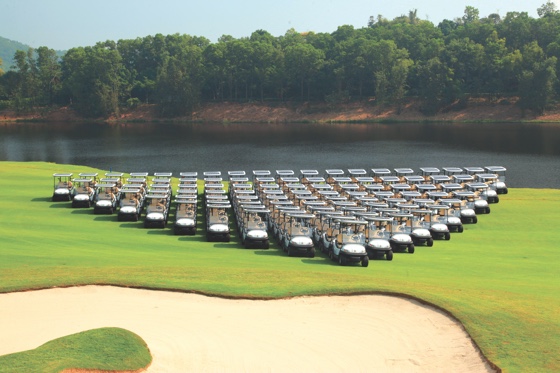Hoteliers increasingly are investing in comprehensive sustainability initiatives that benefit both the planet and bottom line, taking new strategies for water and energy usage, food and supplies sourcing, green construction and waste management all into account. Besides just being positive PR, operators find the considerable savings clearly justify the expenditure.
With many large chains and brands executing long-term sustainability strategies, there is been no shortage of progress as of late. Many hotels have completed the “essential” upgrades already—LED lighting, climate control sensors, kitchen steam hoods—and are moving on to more advanced projects, such as solar power, water reclamation and rapid waste composting, where the savings can be as impressive.
“In today’s world, environmental issues are a clearly established focus of attention that is on everybody’s mind, and everyone is becoming increasingly conscious of these issues,” says Reuben Mifsud, general manager of the Corinthia Hotel Lisbon, recently named a TripAdvisor GreenLeader Platinum Hotel. “In the upscale hotel market, the ability to provide a high-quality service and accomplish it by utilizing the minimum resources possible is nowadays considered with increasing care and importance.”
Here is an excerpt from HOTELS October sustainability feature with the entire story available here.
Powering up
Energy generation and use is always a prime consideration for sustainability, and solar remains a burgeoning piece of the puzzle. Right now Starwood Hotels and Resorts is investing big in solar, as part of its 30-20-20 initiative, which aims to cut energy usage and water consumption by 30% and 20%, respectively, by 2020.
Solar’s expensive, though, so Starwood is using its owned properties to showcase the benefits, hoping franchisees follow. Through a partnership with Energy Renew, Starwood is implementing solar at resorts like the Phoenician in Scottsdale, Arizona, where the vendor essentially buys, installs and operates the solar arrays for Starwood, recouping profits through the savings generated.
“We think this is something that can work well in resort locations, particularly island locations,” says Ken Siegel, chief administrative officer and general counsel for Starwood. “We decided we would demonstrate it at the Phoenician to show that you could do renewable energy and still maintain a luxury aesthetic and experience… We’re even working on how we can embed solar into other things. We’re building solar pool cabanas and highboys to create shaded spots that are embedding the technology above.”
In even hotter parts of the world, solar is becoming even more of an obvious consideration. Sri Lanka’s Jetwing Hotels has been steadily investing in solar over the last five years and is seeing tremendous energy savings, despite the considerable cost and being restricted to working with whatever providers are available in the area.
Its first solar installation was a 20 kW off-grid system at Jetwing Blue in 2010, followed by a 15 kW system at Jetwing Sea in 2011, and a 20 kW system at Jetwing Lagoon in 2012, which are used to supply electricity for specific purposes like guestroom lighting. However, the massive 300 kW solar park Jetwing commissioned at Jetwing Yala in 2014 supplies 40% of the hotel’s electricity demand. “Sri Lanka is one of the best countries in the world for solar, while our rich vegetation diversity allows for cost-effective and sustainable use of biomass,” says Jetwing Director Jude Kasturi Arachchi.

Similar solar commitments are also in place at Mission Hills Group’s three golf resorts in China. In addition to using solar and wind power whenever possible for lighting and heating, the company also purchased a fleet of 300 solar-powered golf carts and even installed solar insecticidal lamps on the courses, decreasing pesticide use by 50%. The company is trying to set an early example in a nation experiencing explosive growth in discretionary spending.
“Mission Hills’ initiative is especially important because it can demonstrate to the rest of the hospitality operators in China the importance of sustainable best practices, and that a business can be successful and also responsible,” says Dr. Ken Chu, chairman of Mission Hills Group, Hong Kong.
Similarly in India, ITC Hotels is finding a combined method using both solar and wind power optimally effective. At present the company is farming some 58% of its total energy from wind and solar, and in 2012 opened the ITC Grand Chola hotel in Chennai, which ITC says is not only the World’s Largest LEED Platinum-rated hotel, but also the only hotel in the world to be 100% electrically powered by wind energy.
“The energy we produce through wind farms is sufficient to light up a 1,400-kilometer stretch of highway for a year,” says Nakul Anand, ITC’s executive director. “The hot water generated through solar power can address the hot water needs of more than 6,000 families.”
